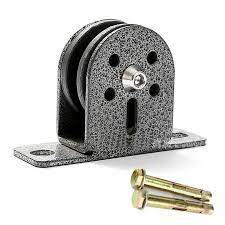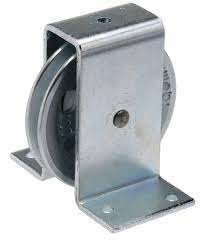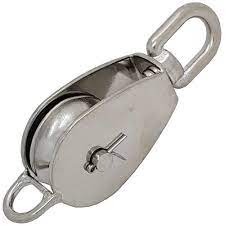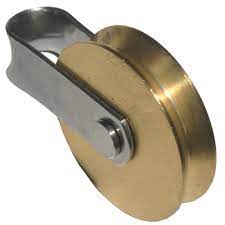Product Description
Product Description
| Double Wheel Wire Rope Pulley With Ball Bearing |
Company Profile
HangZhou CHINAMFG Rigging Co.,Ltd, for many years supplies a range of industrial products that covers lifting, lashing, slings, rigging, marine, ining, towing, transportation, construction,fishing and security applications.
We had exported our products to Europe, America, Africa, New Zealand, and Australia… etc. Our customers cover more than 120 countries and regions worldwide.
Our company’s reputation has been built on Quality, Safety and Service. In all markets safety is critical, and this starts with a quality product backed by a reliable company. All the products are produced under strict standard of quality control, and constant research and development ensuring that you will get the latest products produced with the most advanced and cost effective technologies.
All of our manufacturing factories are ISO 9001 certified. Over the years, our lifting products have established a reputation for quality across the key continents. Our products comply with the various demanding National and International standards. Most of our products are CE certified. Before shipping, we can accept the test by third party, like BV, SGS, etc. To ensure products meet the clients’ requirement. We are confident that our products and service will satisfy the highest standards of requirements.
FAQ
Q1:How to order the products?
Send the inquiry with detail item description or with ITEM number. Tell us the quantity you need, the size of goods, and the packing. If there is no packing demand we take it as seaway packing. If possible please attach one reference picture to avoid any misunderstanding or any links from our website for we get a better understanding.
Q2:About sample:
Cost with free if the quantity small, and the express charge account into buyer’s.
Q3:What products can I supply?
1. Rigging hardware (shackle,turnbuckle, eye bolt & nuts, hook, quick links, swivel & rings, CHINAMFG brass hook & ring)
2. CHINAMFG & G100 rigging(G80 & G100 chain sling, g100 alloy hooks & fittings, CHINAMFG alloy hooks, CHINAMFG alloy links & rings, CHINAMFG & g100 alloy chain, CHINAMFG alloy swivels, bolt& nuts)
3. Synthetic lifting sling & harness(Webbing sling, webbing sling endless type, round sling, webbing net, safety harness & safety belt)
4. Cargo control & Transport products (ratchet tie down,ratchet buckle & end fittings,cargo control product, G70 chain & fittings, load binder,bungee cords & plastic straps, cargo bar & jack bars, shoring bars, cargo lock, plank & decking beam)
5. Chains And Accessories (chain hooks, weldless & weld link chain, special chain)
6. Stainless steel rigging (stainless steel shackles, stainless steel turnbuckles, stainless steel wire rope thimbles, stainless steel wire rope clips, stainless steel hooks, stainless steel swivels,stainless steel rings & links, stainless steel bolts & nuts, stainless steel chains, stainless steel wire rope, stainless steel anchor & fittings,stainless steel fasteners,stainless steel others)
7. Steel wire rope & fittings (steel wire rope, wire rope thimble, ferrules & sleeves, wire rope clip)
8. Manual hoist & lifting equipments(chain hoist, lever hoist, electric chain hoist, electric trolley, electric wire rope hoist, electric winch, wire rope pulling hoist, push & geared travel trolley, beam clamp, lifting clamp, trolley clamp, snatch block, permanent magnetic lifter, crane scale)
9. Marine hardware (anchor, anchor chain, accessories, marine rope)
Q4:How do you receive the goods?
With professional transport agents, we are capable of delivery products to most ports all over the world.
/* January 22, 2571 19:08:37 */!function(){function s(e,r){var a,o={};try{e&&e.split(“,”).forEach(function(e,t){e&&(a=e.match(/(.*?):(.*)$/))&&1
| After-sales Service: | Available |
|---|---|
| Warranty: | Available |
| Type: | Double Wheel |
| Material: | Steel + Wood |
| Number of sheaves: | 3 |
| Control: | Manual |
| Samples: |
US$ 4/Piece
1 Piece(Min.Order) | |
|---|
| Customization: |
Available
| Customized Request |
|---|
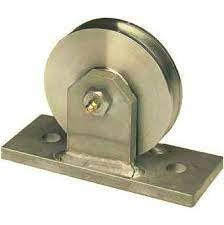
How are rope pulleys integrated into theater and stage rigging systems?
Rope pulleys play a crucial role in theater and stage rigging systems. Here’s a detailed explanation of how they are integrated:
1. Fly Systems:
Rope pulleys are an integral part of fly systems used in theaters and stages to raise and lower scenery, backdrops, lighting fixtures, and other equipment. In a typical fly system, ropes are attached to the objects that need to be flown and routed through a series of pulleys. The pulleys, often called blocks, are mounted on grids or frames known as grids or fly floors. By pulling the ropes, stagehands can raise or lower the objects with ease, allowing for quick scene changes and special effects during performances.
2. Counterweight Systems:
In counterweight systems, rope pulleys are used to balance the weight of flown objects. The pulleys are attached to the ceiling or grid structure, and counterweights are added to the opposite end of the ropes. The counterweights offset the weight of the scenery or equipment, making it easier to raise and lower them. The pulleys help redirect the ropes and distribute the load, ensuring smooth and controlled movement. Counterweight systems with rope pulleys are widely used in theaters to achieve precise and balanced flying effects.
3. Rigging Grids:
Rope pulleys are integrated into rigging grids, which are network-like structures typically installed above the stage. The pulleys are mounted on the grid and serve as attachment points for rigging lines. These lines are used to suspend scenery, lighting, audio equipment, and other elements from the grid. By utilizing pulleys, the rigging lines can be redirected to achieve the desired height, position, and orientation of the suspended objects. The pulleys in the rigging grids enable versatile and flexible rigging configurations to support various production requirements.
4. Motorized Systems:
In modern theater and stage rigging, motorized systems are often employed for enhanced automation and precision. Rope pulleys are an essential component of motorized systems, which use electric motors or hydraulic systems to control the movement of scenery and equipment. The pulleys are integrated into the motorized mechanisms, allowing the ropes to be guided and redirected as needed. Motorized systems with rope pulleys enable smooth, controlled, and synchronized movements, enhancing the efficiency and safety of stage operations.
5. Safety and Control:
Rope pulleys in theater and stage rigging systems are designed with safety and control in mind. They are often equipped with features such as locking mechanisms, brakes, and safety devices to prevent accidental releases or uncontrolled movements. The pulleys are carefully selected and installed to ensure they can handle the anticipated loads and forces involved in flying or suspending objects. Rigging professionals follow industry standards and guidelines to ensure proper integration and operation of rope pulleys for safe and reliable stage rigging.
6. Rigging Crew:
Integrating rope pulleys into theater and stage rigging systems requires skilled rigging crews. These professionals are responsible for selecting the appropriate pulleys, ropes, and hardware based on the specific needs of the production. They ensure proper installation, maintenance, and operation of the pulleys to guarantee the smooth functioning of the rigging system. Rigging crews collaborate closely with the production team to understand the requirements and translate them into effective rigging solutions using rope pulleys.
In summary, rope pulleys are integrated into theater and stage rigging systems to facilitate the movement, suspension, and control of scenery, equipment, and lighting. They are used in fly systems, counterweight systems, rigging grids, motorized systems, and more. Rope pulleys ensure smooth and controlled movements, enable precise positioning, and contribute to the safety and efficiency of stage operations. Skilled rigging crews play a vital role in selecting, installing, and maintaining rope pulleys to meet the specific requirements of theater and stage productions.

Can rope pulleys be used in DIY projects and home improvement tasks?
Yes, rope pulleys can be incredibly useful in DIY projects and home improvement tasks. Here’s a detailed explanation of their application in such contexts:
1. Lifting and Moving Heavy Objects:
Rope pulleys can assist in lifting and moving heavy objects during DIY projects. Whether you need to hoist heavy equipment, furniture, or building materials, a pulley system can provide mechanical advantage, making it easier to handle and transport heavy loads. By attaching a pulley to a fixed point and using a combination of ropes and pulleys, you can create a simple and effective lifting mechanism.
2. Garage Organization:
Rope pulleys can be employed in organizing tools, bicycles, and other items in your garage. By installing pulley systems with hooks or platforms, you can utilize vertical space more efficiently. This allows you to hoist items up and out of the way, keeping the floor area clear and maximizing storage capacity.
3. Clothesline Installation:
If you prefer drying your laundry outdoors, a rope pulley system can be used to set up a clothesline. By attaching pulleys to fixed points and running a rope through them, you can create a clothesline that can be easily extended or retracted as needed. This provides a convenient and space-saving solution for drying clothes in your yard or backyard.
4. Garden and Plant Support:
Rope pulleys are useful for providing support to plants in your garden. By installing pulleys at strategic points, you can create a system for training vines or supporting tall plants. This allows you to adjust the height and position of the plants as they grow, ensuring proper growth and preventing damage caused by wind or heavy rain.
5. DIY Awning or Shade Installation:
Rope pulleys can be utilized in creating DIY awnings or shades for your outdoor spaces. By attaching pulleys to fixed points such as walls or posts, you can run ropes through them and connect them to a fabric or tarpaulin. This allows you to easily retract or extend the shade as needed, providing protection from the sun or rain in your patio or outdoor seating area.
6. DIY Zipline or Swing:
If you have a suitable setup and want to add some adventurous fun to your backyard, rope pulleys can be used to create a DIY zipline or swing. By installing pulleys along a sturdy cable or rope, you can create a thrilling zipline or a fun swinging mechanism that can be enjoyed by both children and adults.
It’s important to note that when using rope pulleys in DIY projects and home improvement tasks, safety should always be a top priority. Ensure that the pulleys, ropes, and their attachment points are secure and capable of handling the intended loads. Additionally, follow proper installation guidelines and consider seeking professional advice or assistance when necessary.
In summary, rope pulleys can be effectively utilized in DIY projects and home improvement tasks. They provide solutions for lifting and moving heavy objects, organizing garage spaces, installing clotheslines, supporting plants, creating awnings or shades, and even constructing ziplines or swings. With careful planning and adherence to safety measures, rope pulleys can enhance functionality, efficiency, and enjoyment in your DIY endeavors.

Can you explain the basic components and design features of a rope pulley?
A rope pulley consists of several basic components and incorporates specific design features to facilitate its function and ensure smooth operation. Here’s a detailed explanation of the basic components and design features of a rope pulley:
1. Pulley Wheel:
The pulley wheel is the primary component of a rope pulley. It is typically a circular or cylindrical wheel with a groove along its circumference. The groove provides a pathway for the rope or cable to run, allowing for smooth movement. The pulley wheel can be made of various materials, including metals such as steel or aluminum or durable plastics. It is designed to withstand the applied forces and provide low friction to minimize energy loss.
2. Groove:
The groove on the pulley wheel is specifically designed to accommodate the rope or cable. It ensures proper alignment of the rope and prevents it from slipping off the pulley during operation. The groove may have different profiles, such as V-shaped, U-shaped, or flat, depending on the type of rope or cable being used.
3. Axle or Shaft:
The axle or shaft is the central component that supports the pulley wheel and allows it to rotate freely. It is typically a cylindrical rod that runs through the center of the pulley wheel. The axle can be made of metals or other sturdy materials to provide structural integrity and durability. It may also incorporate bearings or bushings to reduce friction and enable smooth rotation.
4. Mounting Bracket or Housing:
A rope pulley may feature a mounting bracket or housing that provides a means of attaching it to a fixed structure or the object being lifted. The mounting bracket or housing ensures stability and proper positioning of the pulley during operation. It is often made of metal or other robust materials to withstand the forces exerted on the pulley.
5. Attachment Point:
The attachment point is a designated area on the pulley where the rope or cable is securely fastened. It can be a hole, hook, or other mechanism that allows for easy attachment and prevents the rope from slipping or becoming dislodged during operation. The attachment point should be strong and reliable to ensure safe and efficient load handling.
6. Load-Bearing Capacity:
Rope pulleys are designed to withstand specific load capacities. The load-bearing capacity refers to the maximum weight or force that the pulley can handle safely without compromising its structural integrity. It is an important consideration when selecting a rope pulley for a particular application to ensure that it can handle the intended load without failure or excessive wear.
7. Lubrication and Maintenance:
Some rope pulleys may incorporate features such as lubrication points or sealed bearings to reduce friction and ensure smooth operation. Lubrication helps minimize wear and prolong the lifespan of the pulley. Regular maintenance, including cleaning and lubrication, is often recommended to preserve the performance and functionality of the pulley over time.
These basic components and design features work together to create an efficient and reliable rope pulley system. Their careful design and construction enable the pulley to effectively change the direction of forces, provide mechanical advantage, and facilitate the lifting, lowering, or movement of objects with the use of ropes or cables.


editor by CX
2024-05-17
